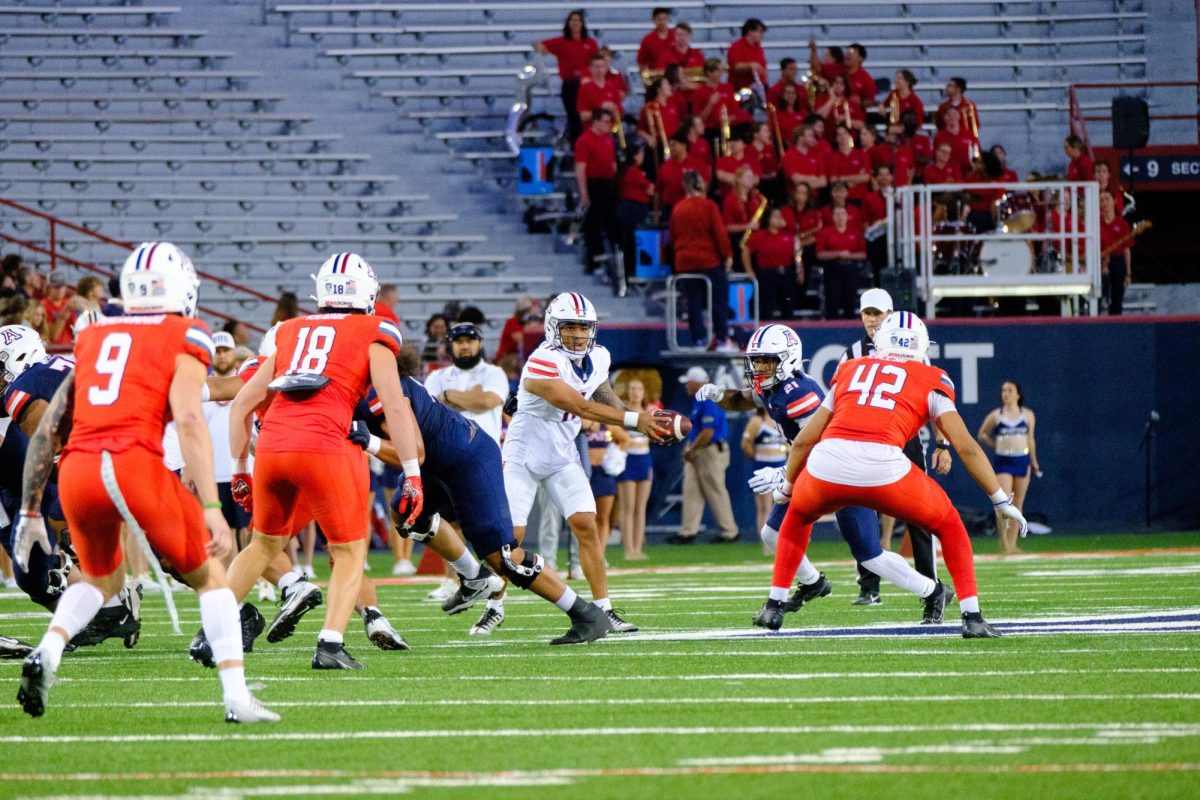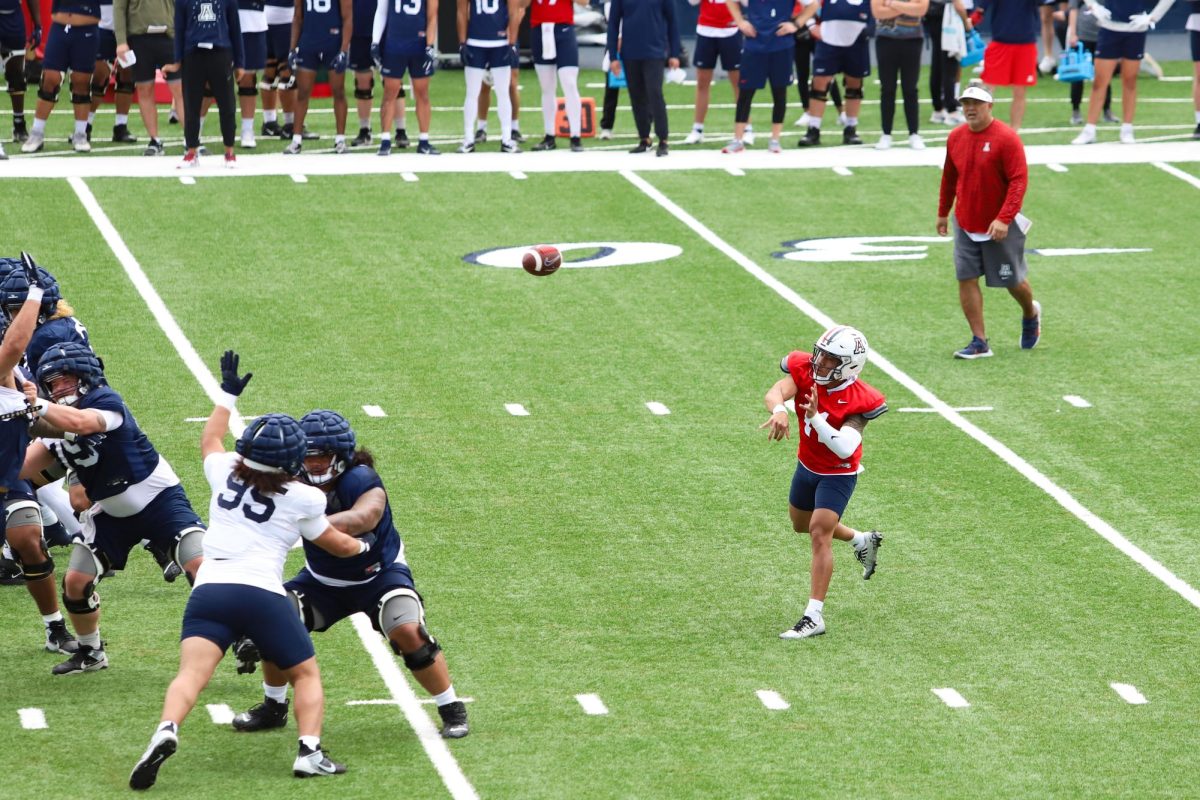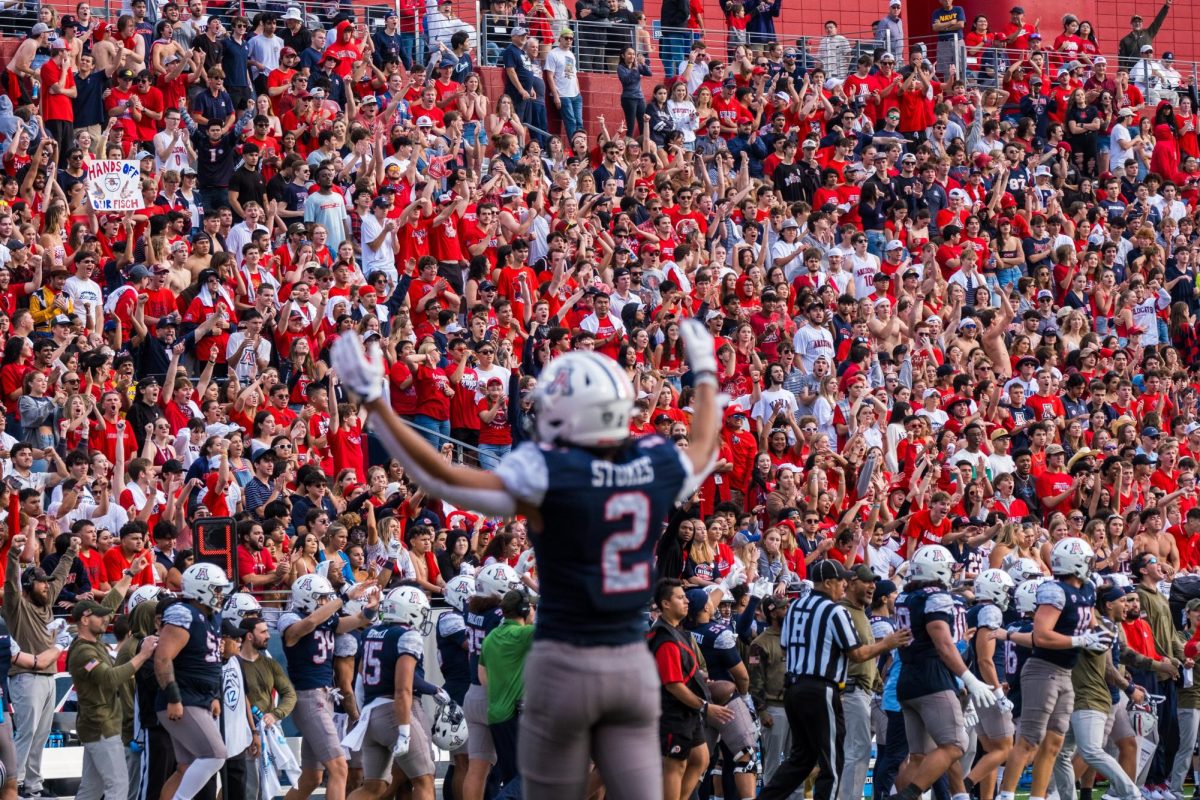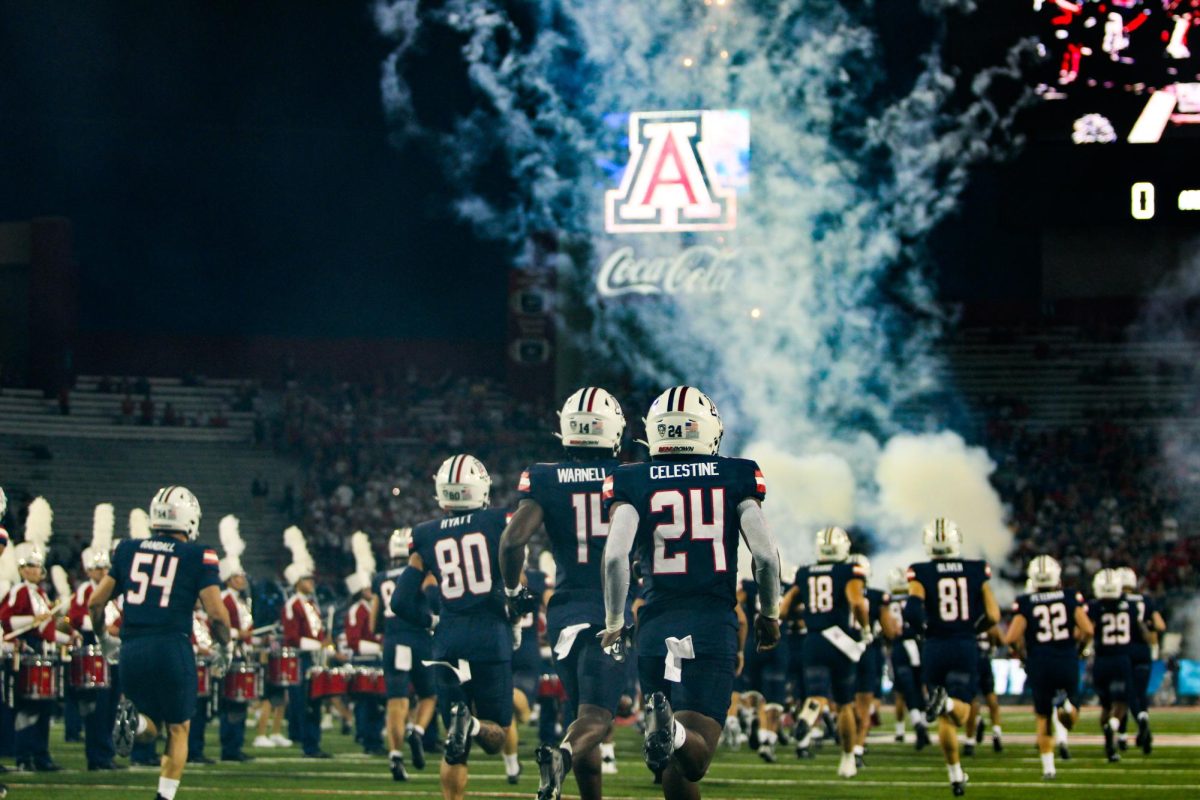Brooks Reed has soared up draft boards since the NFL Combine as one of the premiere pass-rushers in this year’s draft. But since he only recorded 17 sacks in his entire career, it was clear that Reed’s rise must be attributed to his potential and not his production. To get a feel for the possible first-round pick, I took a look at film from two games from the 2010 season: one of his best games (five tackles and two sacks in Arizona’s 34-27 win over Iowa) and one of his worst games (one tackle and no sacks in Arizona’s 10-9 win over Cal).
Here’s what I saw:
The good
What jumps out almost immediately is that Reed is an effort guy. He has a nonstop motor and sells out on each and every play. He’s just as likely to make a tackle in the box as he is 20 yards down field chasing the play.
In college, he lined up exclusively on the right side with his hand in the dirt, and he was lined up on the outside shoulder of the left tackle on almost every play.
His first step is fantastic, especially on plays where his lone responsibility is to rush the edge (which was the majority of the time in Arizona’s system). He rarely false steps and the lack of wasted movement makes it almost impossible for a less-athletic offensive tackle to get a full body on him. He loves to go to a spin move, and his leverage and balance when turning are outstanding.
But what most impressed me was his run recognition. He dominated the line of scrimmage against Iowa, both physically and mentally. The majority of his tackles came as the defensive end on the weak side, which is astonishing. The instant he saw that the tackle was down blocking, he immediately pinched to the inside and used his strength to maintain a straight line to the ball carrier. When Iowa ran off-tackle to the right it likely never accounted for Reed making the tackle from the far side, but he did it consistently. The fact that he could recognize those plays so quickly and react to make the unlikely tackle also speaks to his preparation, which will be huge at the next level.
Needs improvement
Most of Reed’s mistakes on the field probably weren’t his fault. In Arizona’s system, he was almost exclusively an edge-rusher and it showed — on almost every play he immediately rushed the outside, regardless of run or pass. Because of this, he was out of position more times than not and ended up surrendering the edge while losing contain.
Arizona likely felt it was OK to turn Reed loose because of its athletic linebackers and its use of safety Joe Perkins as a modified Rover. But on several occasions Reed would end up 15 yards upfield and nowhere near the ball.
That, combined with his max effort every play, tired him out by the end of games. In the first quarter it was almost impossible for blockers to control him, but in the second half he was less effective.
Final analysis
Reed is best served as a 3-4 pass-rushing linebacker rather than a traditional end. That’s basically what he played in college, anyway.
His biggest strength is when he is able to rush the passer on an island (on obvious passing downs in college he would line up almost five yards outside of the tackle) and that is what he’d be doing as a 3-4 outside linebacker. He’s good with his hands which will help him adjust to standing up rather than playing in a 3-point stance.
It’ll be interesting to see how he does in pass coverage, though. More likely than not, you’ll see Reed as a pass-rush specialist in the NFL, especially at first. It might take a few years for him to develop coverage skills.













